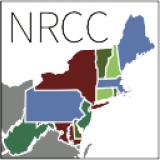Developing a Flash Drought Climatology and Case Studies to Inform Decision-Making

The 2023 National Flash Drought Workshop, hosted by NOAA’s National Integrated Drought Information System (NIDIS), highlighted the need to better understand the impacts of flash drought across economic sectors. This includes identifying relevant decision time frames, typical response actions, and other needs to improve flash drought monitoring. At the workshop, tabletop exercises that mimicked available data sources were used to simulate participants’ flash drought responses.
To address these needs, the Northeast Regional Climate Center will engage with selected partners in the NIDIS Northeast Drought Early Warning System (DEWS) to identify how the speed of drought intensification may affect actions and responses to drought. The team will also identify data and information gaps to monitor and respond to flash drought conditions.
For more information, please contact Crystal Stiles (crystal.stiles@noaa.gov).
Research Snapshot
Art DeGaetano, Northeast Regional Climate Center, Cornell University
What to expect from this research
- Analyze three drought metrics—Standardized Precipitation Index (SPI), groundwater level, and streamflow—for sites across the Northeast to develop a time series of one-week and two-week values. Based on this analysis, the team will identify how these change values compare to historical conditions and assign percentile rankings (e.g., 95th percentile, 90th percentile).
- Assess the coincidence of rapid changes in three drought metrics to understand if rapid changes in SPI, groundwater, and streamflow occur independently or are correlated (with some lag).
- Use the Drought Severity Coverage Index (DSCI) to create a flash drought climatology for the Northeast, which can help decision-makers better understand future flash droughts in a historical context.
- From historical reports, newspaper articles, and meetings with Northeast DEWS partners, identify the types of drought impacts associated with flash droughts and compare and contrast these to other historical droughts.
- Identify historical cases of rapid change in drought conditions and develop case studies demonstrating how drought-related products and services can inform flash drought decisions and responses.


